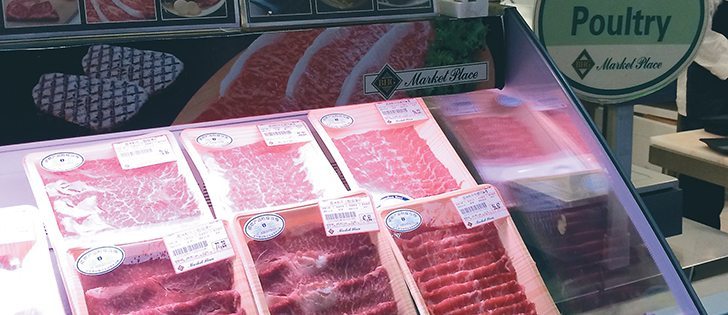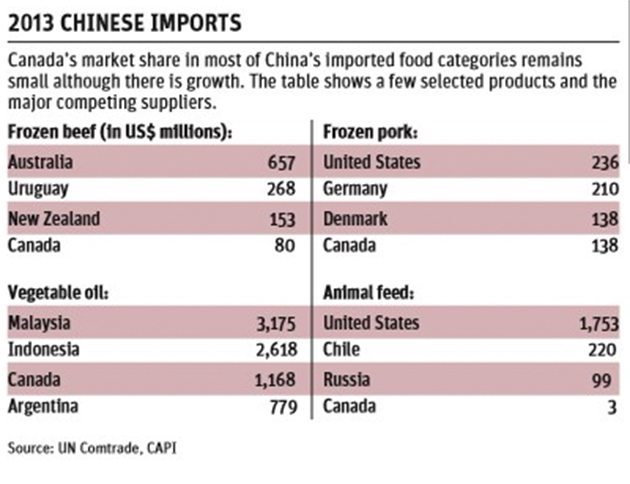A strategy is needed to improve market access and expand food exports, says trade official
Other food exporters are outflanking Canada in China, says the Canadian Agri-Food Policy Institute.
“With some noteworthy exceptions, Canadian food and beverages largely remain off the radar for most Chinese consumers and retailers,” said CAPI president David McInnes.
The report is based on a networking trip to China last November, when a Canadian delegation visited with leading grocery and e-commerce retailers in Beijing and Shanghai.
McInnes said it quickly became apparent that other countries are doing a better job than Canada of making their country brand more visible on store shelves and in the online space.
Read Also

Government support for Canadian farmers has plummeted
Subsidies in Canada were 30 per cent of gross farm receipts in 1980s and are now around eight per cent
“Canada just seemed to be largely, with some exceptions, absent from the store front,” he said.
The rapidly expanding Chinese middle class has a growing affinity for foreign food, and McInnes found that more than 70 percent of food products on the shelves of some high-end grocery stores were imported from abroad.
The delegation could find Canadian products in the high-end and mid-level stores they visited, but it took some work.
It was much easier to spot displays featuring products from the United States, Australia and European Union countries, complete with national flags and posters explaining where the food originated.
It was the same story when the delegation spoke to JD.com and YHD, two leading online retailers of food and beverages in China.
“What we found is that other countries were being far more systematic about how to leverage these online providers,” said McInnes.
China surpassed the U.S. in 2013 as the No. 1 e-commerce market. Online shopping accounts for 10 percent of all purchases, and that is forecast to double by 2020.
Online food purchases represent 3.3 percent of total online sales, but food is the fastest growing segment of the online retail market.
McInnes said the encouraging news for Canadian food exporters is that every retailer they spoke to in China was eager to co-operate in promoting Canadian products.
“They want to profile Canadian because of what it stands for — that it is clean, safe and high quality.”
High-profile food safety scandals, including infant milk formula contaminated with melamine in 2008 and 2011, have left Chinese consumers wary of locally produced products.
“They don’t trust their own domestic agriculture system,” said McInnes.
He said there are significant opportunities for Canadian food exporters to increase sales in China if Canada adopts a new trade strategy for that marketplace:
- Provincial and federal governments need to work with industry to do a better job of promoting the Canada brand in China and differentiating it from other quality importers.
- They need to use high-profile products such as Canadian lobster, snow crab, canola oil, maple syrup and ice wine to lure in Chinese consumers and show them what else Canada has to offer.
- Canada should build a dedicated Canadian-branded pavilion to promote Canadian products with leading online retailers.
- Trade associations and governments need to clarify the import/export process and help small and mid-sized companies understand the regulatory requirements in China, particularly for new or niche foods.
- Governments should focus on maintaining and improving access for important exports such as canola, pork and beef.
“We need to take this to the next level and respond to what our competitors are doing so that we too can get that profile online and in the traditional storefront,” said McInnes.

















